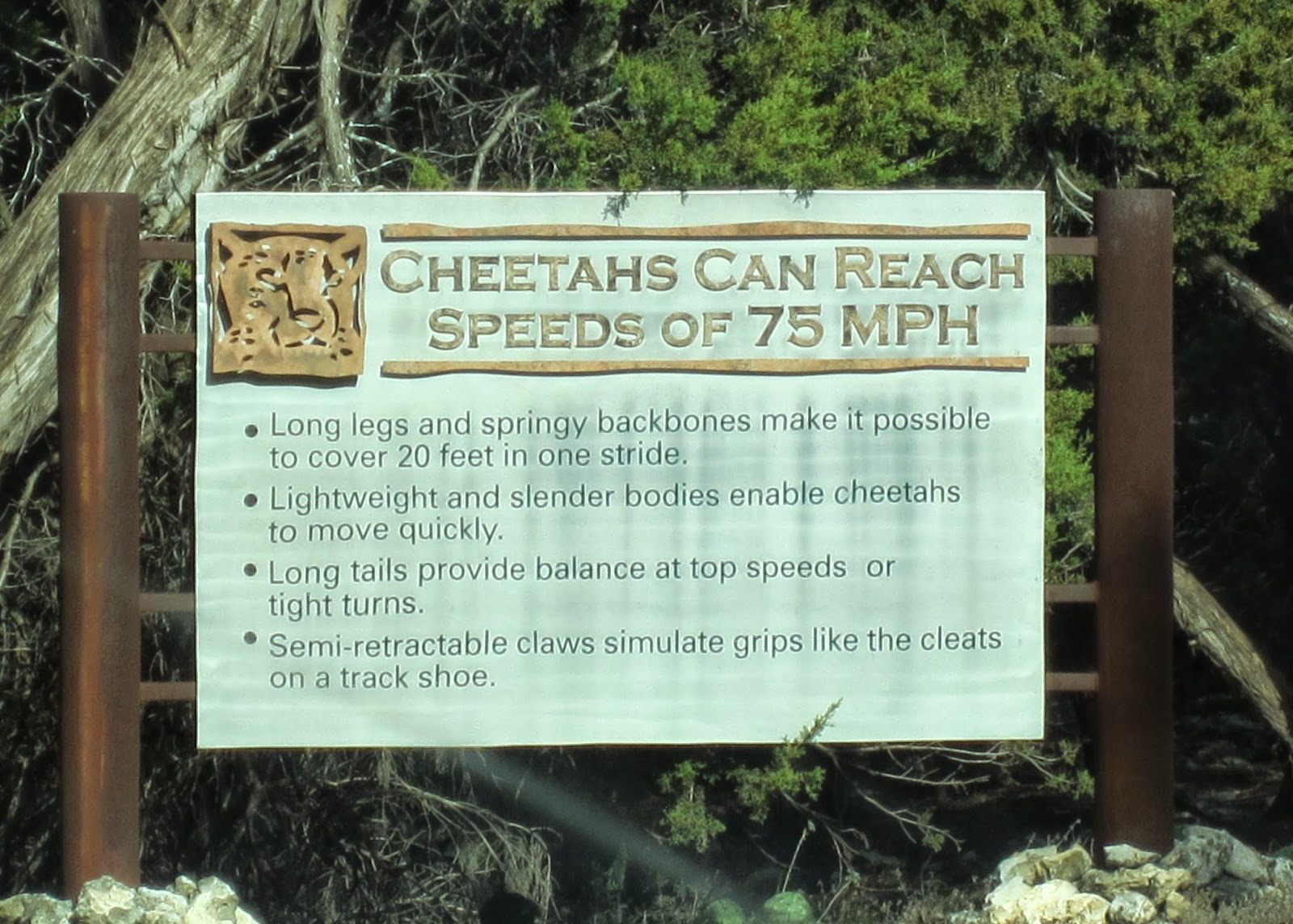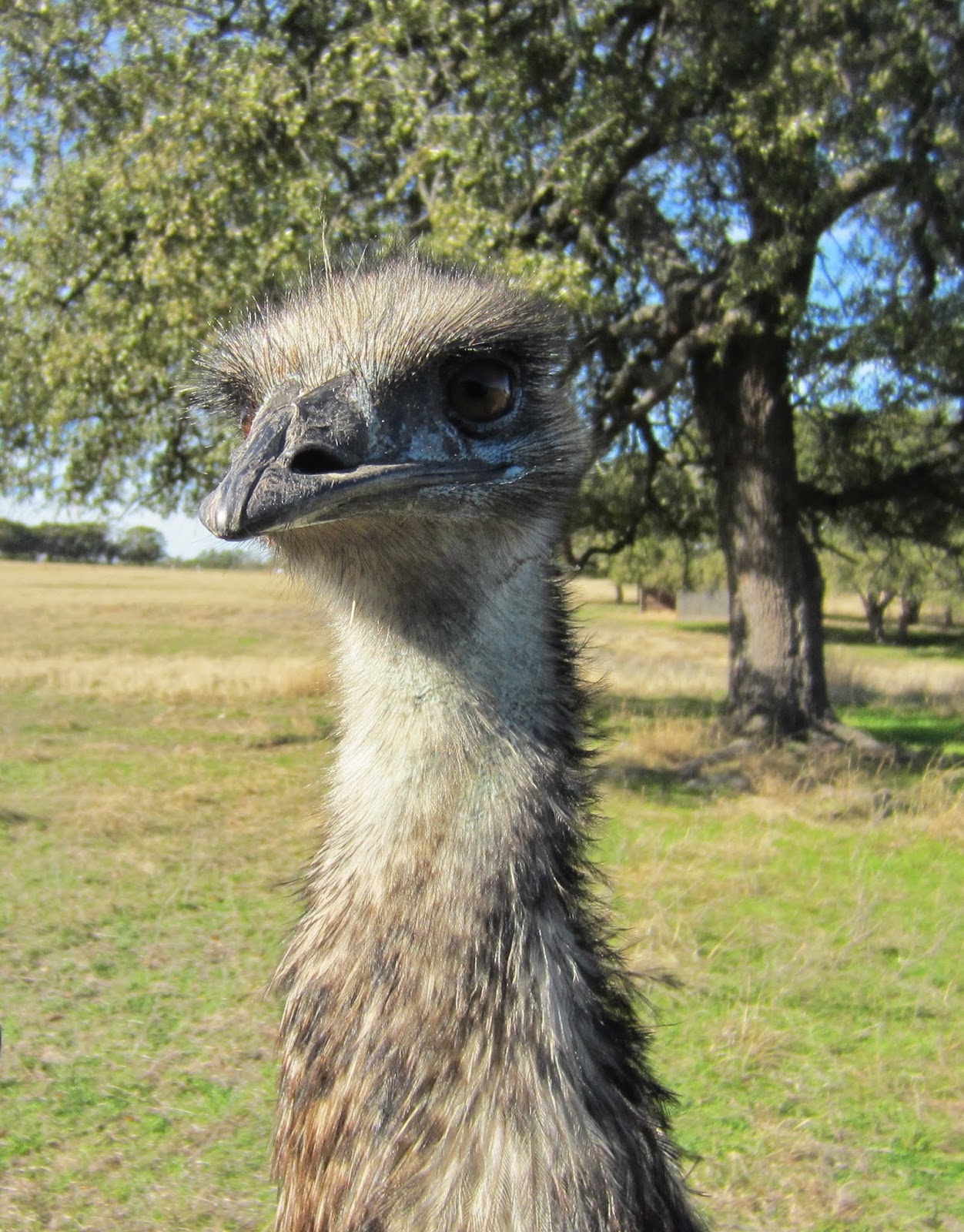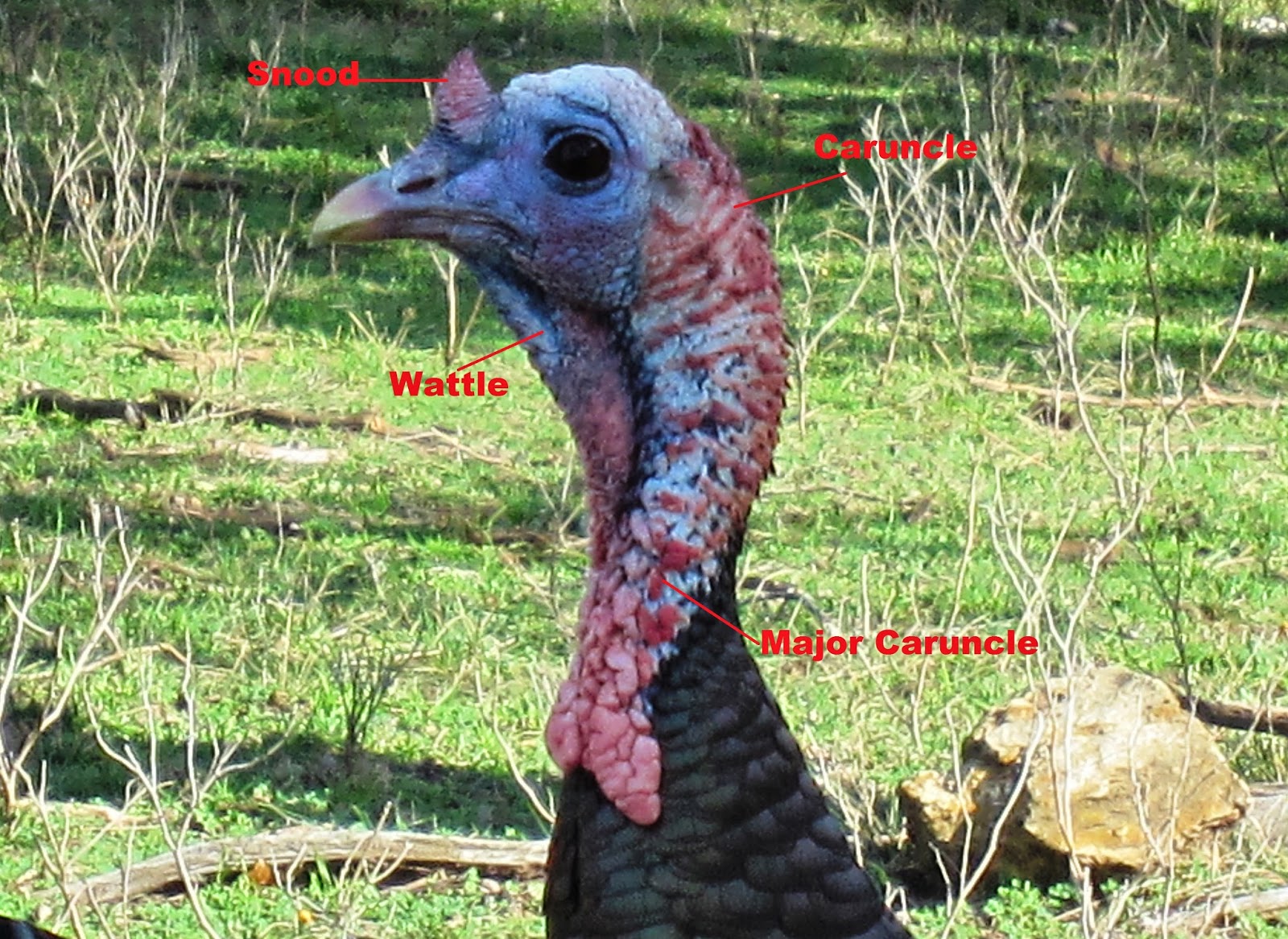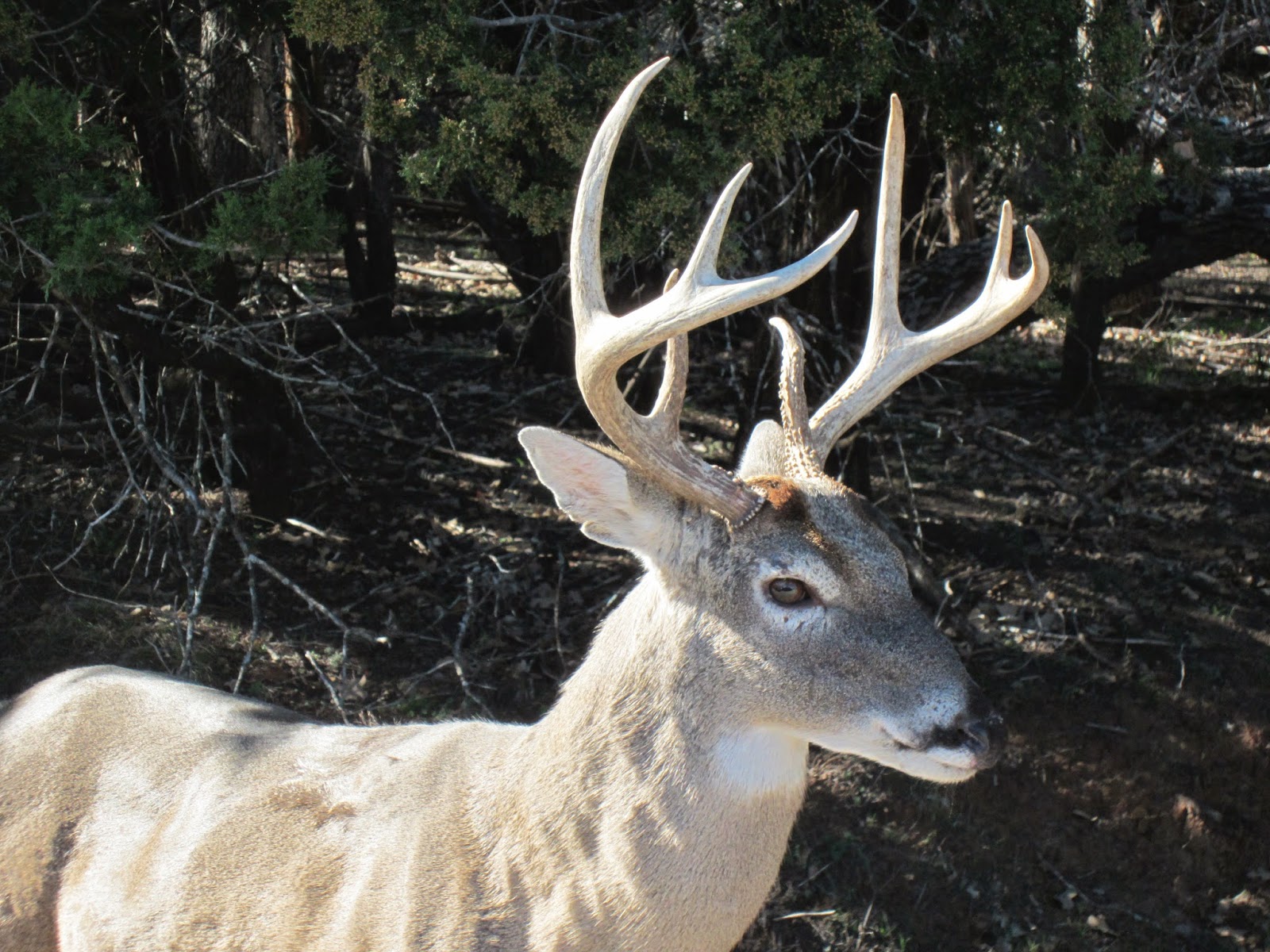When I think of giraffes and wildebeests and zebras and cheetahs, I think of our recent safari in East Africa, not Texas. However, there are over 50 species of animals--many from Africa--wandering around a 1,700 acre preserve a few hours outside Dallas/Fort Worth, and our self-guided driving tour on nine miles of roads through the park resulted in far better photo opportunities (although far less authentic) than we had in Africa.
The best part of the drive through Fossil Rim Wildlife Center was the extremely up-close-and-personal contact we had with the wildlife. No telephoto lens needed here, and no long drives between reserves. It was photo after photo for the three hours we spent on the drive.
I decided to present my pictures alphabetically by species, which by pure luck saves my most favorite experience for last.
ADDAX
Also known as the screwhorn antelope, the addax lives in the Sahara Desert and is the most desert-adapted of all the antelopes. It can go most of its life without drinking, instead pulling moisture from the plants it eats. It has become critically endangered due to overhunting. Its spectacular corkscrew horns can be up to 33" long:
Addaxes are bleached-white in color (good camouflage for the Sahara) and have a distinctive brown toupee:
We learned very quickly that the animals at Fossil Rim are very, very friendly. It helped that we had a bag of all-purpose come-and-get-it animal feed purchased for $10 at the ticket counter (and worth every penny):
He seemed to like having his chin scratched, just like a dog:
Please, sir, can I have some more?
AOUDAD (aka Barbary Sheep)
I love the name aoudad (pronounced OW-dad). With its long beard, it reminds me of the Three Billy Goats Gruff fairy tale. (Goats, sheep--they're all the same to me.) Aoudads, native to North Africa, are the only native African sheep.
Like the addaxes, the aoudads were also very, very friendly. I love this one with his droopy horn and soulful gaze:
Who wouldn't love this cute face?
I think the aoudads make excellent patriarchs for Fossil Rim:
BISON
Although these huge, hairy beasts are quintessentially American, there is something about their physiognomy that fits in well with the "immigrant" animals:
BLACKBUCK
Native to India, blackbucks, a species of antelope, are on the "near threatened" list. They remind me a lot of gazelles, especially the tan and white-colored females:
As is typical in the animal kingdom, the male's coloring is quite a bit more dramatic than the female's:
The male blackbuck's white underbelly and inside legs almost disappear as he struts around with his nose in the air and his spiral horns angled back from his crown. He looks very debonair:
Due to their popularity on hunting ranches, there are more blackbucks in Texas than in their native India:
I love the bull's-eye eye:CHEETAH
Fossil Rim has a few cheetahs, but understandably, they can't just run wild in the Park. It would be dangerous to the visitors, it would definitely be dangerous to the grazing wildlife, and it would be hard to contain them within the park boundaries.
Because we had seen cheetahs in the wild in Africa (see this post), we were not that impressed with a few lackadaisical cheetahs sitting in a chain-link enclosure, but it is still cool that Fossil Rim breeds this very endangered animal, producing more than 100 cubs since 1986.
EMU
Let's switch to Australia for a moment to see another non-African animal that still manages to fit in with the rest of the critters. Emus are really silly-looking birds:
I don't know how those thin legs hold up that massive body. Emus are the world's second-largest living flightless bird and can weigh as much as 120 pounds.
Here is a two-headed, four-legged version, a Dr. Doolittle's Push-Me-Pull-You emu:The feathers are almost like fur:
I wonder where she gets her hair done? I've gotta make sure not to go there:
"Hey! Which one of you guys is giving out the best candy?"
"Show me whatcha got, mister":"Okay, okay, I'll pose for a picture, but then you've got to feed me, okay?"
"Do you like the straight on version?"
"Enough photos already! Where's my grub?"
Another animal not native to Africa, but rather to Eurasia, makes its home at Fossil Rim. The fallow deer's impossibly large palmate antlers, a cross between moose and elk antlers, coupled with the spotted Bambi-like body, looks a bit unnatural, even prehistoric:
Fallow deer have been introduced into parts of the United States, and wild herds can be found in Georgia, Texas, and Rhode Island.
How about this deer with one fully leafed-out antler on one side and a stunted one on the other?
There are some dramatic color variations among the species. These differently colored boys seem to get along just fine:
I love the distinct markings of dots and dashes on the fallow deer's coat. Look carefully and you'll see stars shining brightly over a mountain and a lake:
Here comes one, checking us out rather surreptitiously:
A little bolder, he approaches Bob's window:
YUMMY! Give me more!Back to Africa. This picture could have been taken at the Nairobi Giraffe Center or the Buffalo Springs National Reserve in Kenya or several other places we saw giraffes in the plains of Kenya and Tanzania:
But no--it's in Texas.
These are reticulated giraffes, and as I said in my Africa posts, I never grow tired of watching their slow-motion, graceful gait and the parallel lines their necks always seem to form when they are together:
 |
| Sign in visitor's center, Fossil Rim Wildlife Center |
. . . and HUGE. Don't forget that. Compare the giraffe to the minivan and the deer:
That looks fun. Let's see if we can get him to come to our car. "Here, Giraffe! [whistle]"
When a giraffe stands next to your car, this is what you see:
If you're lucky, this is what you'll see next:. . . and then this:
We did see one disturbing thing in the giraffe herd: a large crimson gash in the underbelly of one of the animals:
It didn't seem to be bothering him:
This is one of my favorite photos of the visit:
ORYX, ARABIAN (aka Gemsbok)
These are animals we were very familiar with from our African safari:
Their horns can grow to an unbelievable 48", although the average length is 33", the same as those corkscrew horns on the addax. Oryx horns are slightly curved, like a parabola. African tribal masks are modeled after their distinctive facial markings:
"Ready for my photo session. Here's my flank."
"Head on face shot, and then a side view:""I really shouldn't, but if you insist:"
ORYX, SCIMITAR-HORNED
Cousin to the Arabian oryx/gemsbok, these guys have been extinct in the wild for about fifteen years. Fossil Rim Wildlife Center is participating in the efforts to breed enough babies so that they can be reintroduced into the wilds of North Africa:
They are beautiful animals, much more delicately colored than their Arabian cousins, and with parallel horns with a strong curve:
 |
| Sign in visitors center, Fossil Rim Wildlife Center |
It's a kick to be able to interact with an animal that was hunted nearly to extinction for its horns and has just recently been rescued:
These scimitar orxyes are magical creatures. In fact, Aristotle said they were the unicorn's prototype. Some believe that the unicorn myth began with a one-horned scimitar oryx, or perhaps one seen from a side view. The horns are hollow bones that cannot be regrown, so if one were to break off, a true uni-horn animal would be the result.They seem so gentle, but every magical creature has its weapon, and I probably shouldn't forget that a scimitar is a single-edged sword.
When I was a kid, I loved Swiss Family Robinson, especially the scene where the family members are racing, each on a different animal. The mount I was always envious of was Ernst the Ostrich. Nevermind that the story takes place in the East Indies and ostriches are from Africa. Never mind that they could never hold the weight of a human. They can run 40 mph, making them at least a contender in the race.
Did you know an ostrich's eyes are bigger than it's brain? It was super fun to be this close to a friendly ostrich:
That's a pretty sturdy looking back. Hmmmm, maybe . . . .
C. S. Lewis's book The Lion, the Witch, and the Wardrobe is one of my favorite books of all time. When I saw my first red deer at Fossil Rim, I immediately thought of the White Stag in that book. Yeah, the color is just a bit off, but the regal bearing, shaggy coat, and impressive antlers are spot-on.
They look a lot like American elk, and like elk, they shed their antlers each year in February and regrow them quickly. I wonder what Fossil Rim does with the discards?
"Scratch me right there . . . oh yeah, that feels great."
"Hey! I smell something good in there! Are you holding out on me?"
"Okay, it's time for a snack, but it's a little hard to get to my food with this big hat on."
 |
| One male with his extensive harem |
With only 2,400 in the wild, the southern black rhino is a critically endangered species. Fossil Rim has a corral full.
That one on the right has a horn that looks like a divining rod:
A black rhino can weigh as much as 3,000 pounds, which seems like a lot, but the white rhino gets as big as 5,000 pounds.
We weren't allowed to get out and feed these guys. No surprise as they can get very aggressive when they feel threatened.
RIO GRANDE TURKEY
Man oh man these birds are ugly. What was Ben Franklin thinking when he suggested they be our national bird? Being not that attractive himself, maybe he could relate in some way.
I think these turkeys are native to Texas rather than a species brought to Fossil Rim for preservation. Their blue head looks like a vulture's head, and that ridiculous red trim seems to be a jazzed up version of the wavy white wigs that are part of English judicial attire:
Lots of parts:
This one looks like he is wearing a scarf tied under his neck: Tres chic.

These richly colored antelope must be named for the species of marten trapped for its luxurious pelt. The brownish-red fur looks silky and warm.
I especially like the way the mane stands straight up, as if there is electricity in the air:
We saw a lot of these, but they didn't come to our car to get a treat. For some reason, they seemed to prefer those large stacks of hay.
Unlike humans, males' fur darkens as they age, so the oldies get almost black. The females are smaller and lighter in color:
WATERBUCK
I've had a soft spot in my heart for waterbucks ever since we saw a mama waterbuck watching a cheetah devour her baby on the Masai Mara Reserve in Kenya.
I love the shaggy necks that replace a proper mane and their target-spotted rumps.
Like the turkey, this pretty little deer is native to Texas and has learned where to get a good meal.
WILDEBEEST OR GNU
We saw more wildebeest in Africa than almost any other animal (except for, perhaps, zebras). I will always remember their wonderful braying-honking calls to each other that we called "moonking." We didn't see very many wildebeests at Fossil Rim, and they certainly weren't as friendly as some of the other animals we saw, but it was wonderful to see their great awkwardness once again--like a teenage boy after a growth spurt.
Fossil Rim has Hartmann's mountain zebras, a variety we didn't see on our African safari. They are native to Namibia and Angola. One unique thing about this species is that it has 32 chromosomes rather than the 44 chromosomes of other species. It seems like that should make a bigger difference than it does.
Fossil Rim is one of the few facilities in the United States to have Hartmann's mountain zebras. The wild population is estimated to be about 8,000 adults.
This one, with dark brown facial stripes rather than black, has come to check us out:
Bob shows him the goods:. . . and he takes a polite nibble:
Apparently, he liked what he tasted, because at this point, the manners vanish, the head comes in, and the mouth opens wide--VERY wide. His lips were quivering like a bowl of jell-o. I have never seen an animal work so hard for his food. I think this is the funniest (and most fun) experience I have ever had with any animal. I laughed harder than I've laughed in years.
I had never touched a zebra before this trip, and I had certainly never had one exhaling lungs full of hot air right into my face. All by itself, feeding this zebra was worth a trip to Texas.
I must say, however, that the poor chap could have used: 1) a good dental hygienist, and 2) a copy of Emily Post's Book of Etiquette. He could have learned a few lessons from his relatives who came by for a visit a bit later on our drive.
Overall, I give the Fossil Rim Wildlife Center an A++. I would love to come here with children. My granddaughters would be in heaven here. Maybe someday we can take them on a trip to Dallas with a detour to Glen Rose.
 |
| Thought from the wall of the visitors center |




























































































































This wildlife center is first on my list of places to see when I visit the Butlers. I'm amazed they allow visitors to feed the animals. I've never seen that before. It takes the viewing to a whole other level.
ReplyDeleteChris, I thought about you potentially having grandchildren in this area. Lucky you!
DeleteI would seriously considering flying back to Dallas just to visit this place again and to take the special behind-the-scenes tour that visits other, more endangered, animals that aren't on normal display. As Judy said, the scenery views are not realistic, but the ability to feed and touch and get your hands slimy with animal spit is just way, way cool. I can still hear Judy saying, "we're driving an hour and half down here for this?" To see her rate it A++ is also super way cool.
ReplyDeleteOh good. I won't have to spend a zillion dollars to go back to Africa to go on safari. I can just head to Fossil Rim and take my Texas grandkids with me. Looks like more fun when you can feed the wildlife.
ReplyDelete